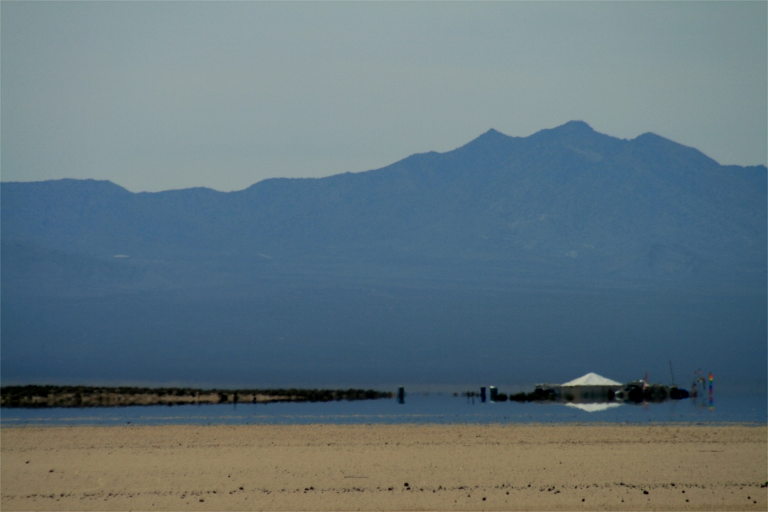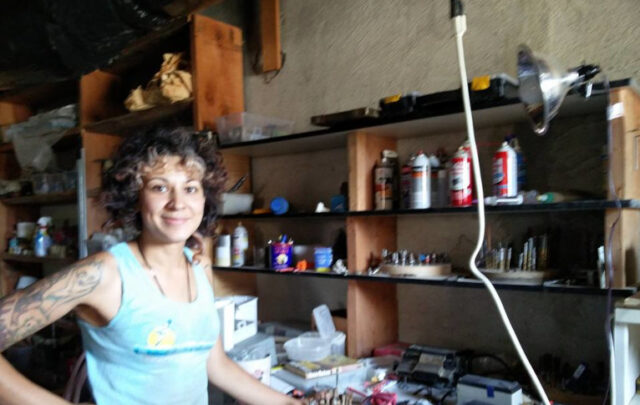In the spring of 2020, the new Irish government announced its desire to develop new measures of well-being and progress in Ireland. The idea was given some prominence in the Programme for Government, ‘Our Shared Future’.
This is exactly the kind of initiative that we in Feasta have been advocating for the past 20-odd years. It’s also in line with an encouraging international trend of governments seeking to reorientate their economies towards well-being, and fits in nicely with the thinking of the global Wellbeing Economy Alliance (of which Feasta is a member).
A recent publication by Fine Gael, ‘Measuring Wellbeing’, refers to this Irish government initiative and makes a case for expanding “the range of economic, social and policy indicators that we use in government”. It lays out a draft outline for developing a wide range of metrics for measuring well-being, along the lines of the OECD’s Wellbeing Framework, and implementing them into State budgeting decisions. There is much in there to agree with.
Unfortunately, however, there is a serious problem with one of the most basic assumptions that is made in the Fine Gael paper. Unless this problem is examined and properly addressed, all the improved measurements in the world won’t be able to improve societal well-being in Ireland.
The problem relates to GDP growth. GDP growth is considered by the paper’s author to be “a critical means to the end of progressing society”.
This is a highly problematic assumption.
The authors take care to point out many of the well-known shortcomings of GDP growth as a measure of progress. So the issue here is not whether or not GDP growth is an unreliable measure of progress; it looks as though we can (almost) all agree on that, these days.
The issue, rather, is that at present levels of production, it is simply not possible for the global – and Irish – economy to continue expanding in the aggregate without doing irreversible and dangerous harm to the environment.
In other words, it is impossible, within the time constraints that we are now facing, to decouple GDP growth from environmental damage strongly and deeply enough to be able to adequately repair that damage. An October 2020 paper by the European Science Advisory Council explains:
“A recent review (Parriqueet al., 2019) examined the extensive literature on consumption of materials, energy, water, greenhouse gases, land, water pollutants and biodiversity loss and their link with GDP. They found evidence of decoupling but it was mostly just relative (not absolute). In cases where absolute decoupling had been observed, it was only for a short time, concerned only certain resources or specific types of environmental impact, or it occurred only in specific locations. Even where absolute decoupling occurred, it was insufficient to ensure local or planetary boundaries were not exceeded…”(p18)
The amount of research demonstrating the extreme difficulty of decoupling GDP growth from environmental damage is, at this stage, so voluminous[1] that being ignorant of it or denying it appears to me to be akin to being ignorant of or denying that anthropogenic climate change exists.
And yet, a majority of politicians of almost all stripes continue to do just that – not just at State level, but also at EU level, with the European Green Deal being promoted as a ’new growth strategy for Europe’, as well as by other powerful international actors and influential policy advisors, such as the OECD’s economics department.
Aggregate ’green growth’, we are constantly being told, is the only way forward. In stating that GDP growth is critical to societal well-being, the Fine Gael paper echoes this unsubstantiated and dangerously unscientific belief.
This is a tragic mistake. If we are unable to be clear about which goals we can actually attain, our economic planning will be distorted in a way that can only worsen the current extremely fraught environmental and economic situation that we’re in.
Why it’s so hard to let go of the dream of aggregate growth
To be clear: it’s probably the case that certain sectors of the economy are in fact capable of ‘green growth’, or at any rate, ‘greener growth’. A more localised and labour-intensive agricultural sector would be an example of this, as would the renewable energy sector.
The problem is that these are just individual sectors, not the whole economy. In the aggregate, the economies of industrialised, energy-intensive countries such as Ireland are going to need to shrink in order to become able to fit within the limits of our biosphere.
Given the strength of the evidence against aggregate GDP growth being possible at present levels of production and consumption, one might well wonder why most policymakers appear to stick so rigidly to the line that it is not only possible, but necessary.
Some clues about this can be found by reading the Fine Gael document. Here are two reasons its authors give for considering GDP growth to be of critical importance:
“1. Many of the wellbeing indicators will be directly linked to economic growth (e.g. unemployment, wages, poverty etc.)
2. All of the indicators will have the opportunity to be improved by the increased fiscal resources economic growth provides”
Further down the document, a third reason is also touched on indirectly, but let’s start with these ones.
It certainly seems clear that GDP growth can introduce more money into the economy, and that an increase in revenue, both public and private, can – at least in some circumstances – lead to more jobs, higher wages and less poverty. All of these are things that we need at present.
It’s important to remember, however, that all of these goals also have inherent limits. With regard to employment, there can’t possibly be more jobs than there are people of legal working age, and moreover, the motivations behind people seeking paid employment can be highly varied. There are times in life when some employable people, given the choice, might prefer not to take on paid work, for valid reasons – perhaps they have children to mind or some other project that’s unpaid but socially constructive. As far as wages go, high wages are only useful if there are meaningful and affordable things available to spend them on. And while there is definitely a base level of resources that everyone must have access to in order to be able to live comfortably (the inner boundary of Kate Raworth’s Doughnut Economy), after a certain point the link between material wealth and happiness becomes considerably more nuanced[2].
For these reasons I believe it is preferable to focus on the ‘needs behind the needs’ – the basic material needs that I alluded to above – rather than to imply that our ultimate goals involve an endless expansion of employment, wages and overall wealth.
So the question then becomes, are there other ways to achieve these basic material needs, apart from GDP growth?
Ways forward
There are quite a few direct measures which Ireland can take to make its economy fairer – by which I mean, better at ensuring that everyone’s basic needs are met, including the needs of the most vulnerable – and more resilient. They include taxation reform, changes in agricultural policy and a more comprehensive provision of basic services, along with universal basic income. I won’t discuss every single sector here, but will go into a little more detail on the financial sector in particular, since the Fine Gael document also contains the following criticism of New Zealand’s system for measuring well-being:
‘…the financial capital section in the New Zealand framework could more clearly include liabilities as well as assets, e.g. government debt statistics including debt ratio, debt servicing costs and budget deficits (the related ‘flow’ statistic). This is very important for a small open economy in a monetary union, and is a part of our ‘capital’ constantly judged by those who lend to us.’(p6)
This passage suggests an awareness – a fear, I would say – of the risk arising from the high indebtedness of the Irish economy. Indeed, while the document does not say so explicitly, I believe that a huge part of the global obsession with GDP growth is that it enables high levels of debt to be maintained without triggering panics, collapses, capital flight and other unpleasant phenomena. Where there is growth, there is likely to be a smaller budget deficit, lower debt servicing costs and a lower debt ratio. This is the third reason for desiring GDP growth that I alluded to above.
The assumption being made in the document, I suspect, is that our vulnerability to being badly judged by creditors is lessened if we have ‘healthy’ levels of GDP growth.
And why do we need to be well-regarded by these creditors? Well, because they invest in the economy.
So it would be good to identify and cultivate other, non-GDP-growth-related ways to maintain decent levels of investment in the economy.
I believe the introduction of more community-focussed financial service providers in Ireland, along the lines of the Sparkassen in Germany, together with a ‘safe haven’ banking service such as is currently being considered in the Netherlands, would help to gradually stabilise the over-leveraged sectors of the Irish economy, and would also help to shelter the Irish economy from the volatile and turbulent high seas of international financial speculation.
On a broader scale, it’s also very important to bear in mind that there are certainly other ways to create money and introduce it into the economy than via GDP growth. As the Fine Gael document suggests, Ireland has no direct control over its money supply as it is a Eurozone member. But a more progressively-oriented ECB can and should be lobbied for at a European level, and some are already doing so.
SImply adding more money to the economy- even if it is a stabler kind of money than most current money – obviously won’t solve the whole problem and could even make things worse if it isn’t judiciously done, but I believe it to be important and necessary, because it would allow us to bypass the problematic structural, cultural and psychological aspects of debt-based money creation.
Distinguishing reality from mirages
I’m sure that that there are plenty of other measures that could be taken that would help Ireland’s economy to become more vibrant, fair and stable while weaning it off its reliance on GDP growth. To identify them, however, it will be necessary for economic researchers to take a far more scientific approach to establishing their goals.
The EASAC paper quoted above also includes this curious passage:
“Achieving decoupling may require a move away from measures that express welfare in material goods production like GDP (section 2.5.1) to indicators where progress does not imply natural resource consumption (Kubiszewski et al., 2013).”(p18)
This appears to me to be saying that we need substitute measurements of welfare to replace GDP.
One such possible substitute is the National Well-being Index that Feasta’s Well-being Group have been working on for some years, in collaboration with the German academic institution FEST. Such an index is already being employed in several German states. An Irish NWI would be a work in progress that would probably be regularly reviewed and fine-tuned, but it already seems more accurate than GDP in measuring genuine economic well-being. It could be employed along with a suite of non-monetised measurements relating to society and the environment, similar to those that are used by the OECD and New Zealand.
If you’re stuck in a desert and feeling uncomfortably overheated, you may find yourself being lured by mirages into dangerous territory. If we want our economy to deliver well-being, we’ll need to steer clear of mirages of ‘green growth’ and instead orientate our economic planning towards goals that not only focus on well-being, but are realistically attainable.
Endnotes
1. See for example:
“Towards a sustainable future: transformative change and post-COVID-19 priorities”, European Academies Science Advisory Council, October 2020: https://easac.eu/fileadmin/user_upload/EASAC_Perspective_on_Transformative_Change_Web_complete.pdf
‘Decoupling Debunked’, European Economics Bureau, October 2019: https://eeb.org/library/decoupling-debunked/
“Decoupling for ecological sustainability: A categorisation and review of research literature”, Vadén et al, Environmental Science and Policy, October 2020
https://www.sciencedirect.com/science/article/pii/ S1462901120304342?dgcid=coauthor
2. “Do we need $75000 a year to be happy?”, Belinda Luscombe, TIME magazine, Sept 26 2010: http://content.time.com/time/magazine/article/0,9171,2019628,00.html
Featured image: mirage of a lake in the Mojave Desert, Nevada. Source: https://en.wikipedia.org/wiki/Mirage#/media/File:Desertmirage.jpg





